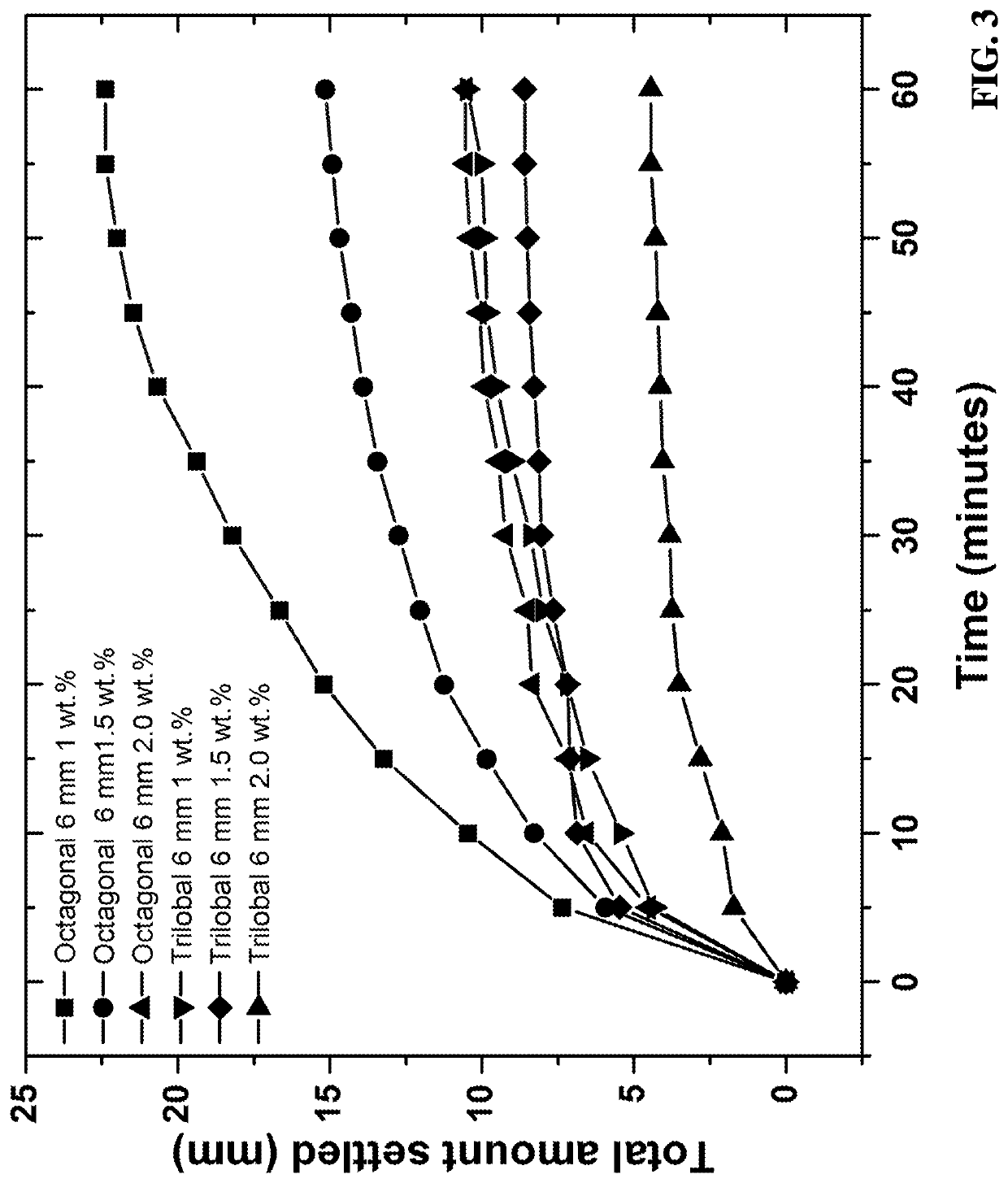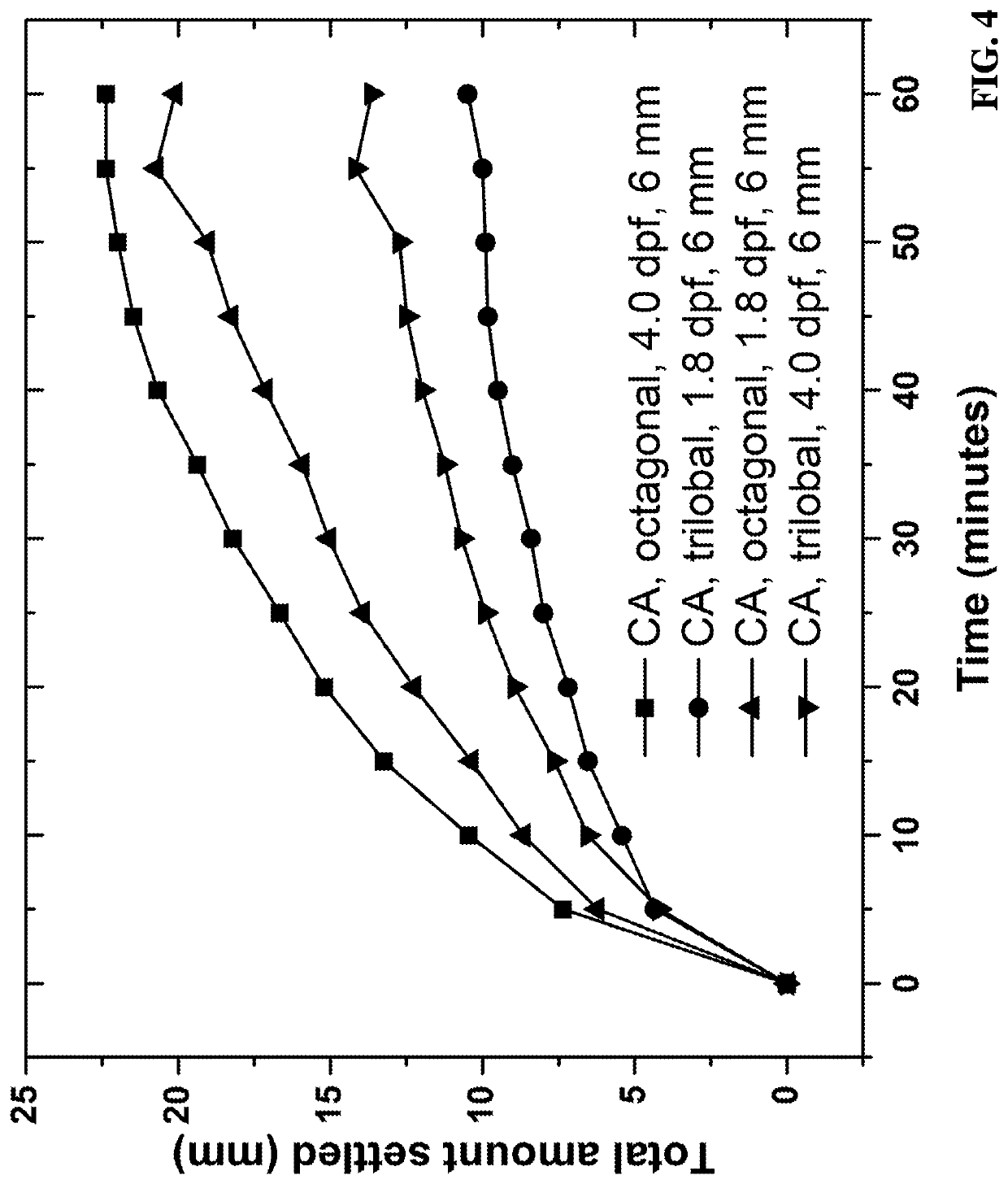Fiber configurations for wellbore treatment compositions
a fiber configuration and composition technology, applied in the direction of fluid removal, borehole/well accessories, chemistry apparatus and processes, etc., can solve the problems of gas slowing or even stopping, passages tend to close, and non-uniform delivery of proppant through the wellbor
- Summary
- Abstract
- Description
- Claims
- Application Information
AI Technical Summary
Benefits of technology
Problems solved by technology
Method used
Image
Examples
example 1
[0085]Cellulose acetate-based fibers were produced from Eastman cellulose acetate (CA-394-60S) polymer with a dry spinning process using acetone as a solvent. To probe the effect of fiber morphological properties on proppant settling performance, three fiber variables were selected: fiber length, fiber cross-sectional geometry, and fiber form (e.g., straight or crimped). The crimping process served to emboss a crimping structure onto each filament. In order to study the effect of fiber cross-sectional geometry, four different geometries were tested including octagonal, X-shaped, trilobal, and round. Microscopy images and the approximate dimensions of the different fiber geometries are depicted in FIG. 1 at 1000-2000× magnification. As shown in FIG. 1, (A) is the cellulose acetate octagonal (“popcorn”), (B) is the cellulose acetate “X-shape,” (C) is the cellulose acetate “trilobal,” (D) is the poly-lactic acid “round,” (E) is the straight fibers, and (F) is the crimped fibers.
[0086]A...
PUM
| Property | Measurement | Unit |
|---|---|---|
| temperatures | aaaaa | aaaaa |
| temperatures | aaaaa | aaaaa |
| average angle | aaaaa | aaaaa |
Abstract
Description
Claims
Application Information
 Login to View More
Login to View More - R&D
- Intellectual Property
- Life Sciences
- Materials
- Tech Scout
- Unparalleled Data Quality
- Higher Quality Content
- 60% Fewer Hallucinations
Browse by: Latest US Patents, China's latest patents, Technical Efficacy Thesaurus, Application Domain, Technology Topic, Popular Technical Reports.
© 2025 PatSnap. All rights reserved.Legal|Privacy policy|Modern Slavery Act Transparency Statement|Sitemap|About US| Contact US: help@patsnap.com



